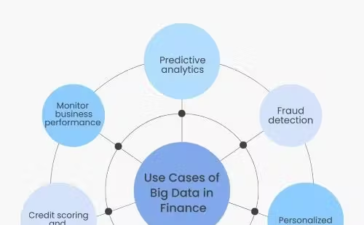The Rise of AI in Fraud Detection: Navigating the Future of Cybersecurity
With the increasing prevalence of online transactions, the scope and complexity of fraudulent activities have escalated significantly. Conventional cybersecurity measures, reliant on human oversight, are often overwhelmed by the sheer volume and sophistication of modern cyber threats. To counteract these challenges, the integration of advanced technologies like Artificial Intelligence (AI) in fraud detection has emerged as a game-changer in the cybersecurity landscape.
What is AI Fraud Detection?
AI fraud detection leverages machine learning algorithms to identify fraudulent activities by analyzing vast amounts of data. Unlike traditional methods, which may rely heavily on predefined rules and human intuition, AI systems continuously learn and adapt from new data, improving their accuracy over time. By recognizing patterns and anomalies that may indicate fraud, these systems provide a proactive defense mechanism that enhances transaction security.
How Does AI Fraud Detection Work?
The core of AI fraud detection lies in its ability to process and analyze massive datasets. Here’s a breakdown of its operational mechanisms:
- Data Collection: Aggregates transactional and behavioral data from diverse sources.
- Feature Engineering: Identifies key attributes or features that could signal fraudulent behavior.
- Model Training: Utilizes historical data to train machine learning models to recognize fraud patterns.
- Anomaly Detection: Applies statistical techniques to spot deviations from normal patterns.
- Continuous Learning: Regularly updates the model with new data to adapt to evolving fraud tactics.
- Alerting and Reporting: Flags suspicious activities and generates detailed reports for further investigation.
Use Cases Across Industries
AI fraud detection is revolutionizing various sectors by minimizing financial losses and enhancing security:
- Banking and Financial Services: AI monitors accounts for unusual transactions and identifies synthetic identities in credit and loan applications. This reduces financial losses and improves operational efficiency.
- E-Commerce: AI assesses transaction risks, detects identity theft, and combats return and refund fraud, ensuring secure transactions and customer satisfaction.
- Online Gaming and Virtual Economies: AI tracks in-game transactions and asset transfers to prevent money laundering and account takeovers, protecting both revenue and player trust.
Benefits of AI Fraud Detection
- Real-time Detection and Prevention: AI enables 24/7 monitoring and immediate action against suspicious activities, minimizing potential losses.
- Scalability: AI systems can handle growing transaction volumes without proportional increases in staffing, making them ideal for expanding businesses.
- Cost Reduction: Automates fraud detection, reducing the need for extensive manual reviews and freeing up resources for strategic tasks.
- Increased Accuracy: AI surpasses human capabilities in data analysis, leading to more precise fraud detection.
- Customer Trust and Satisfaction: Enhances transaction security, fostering customer loyalty and confidence.
Challenges of AI Fraud Detection
- Data Quality and Availability: Effective AI fraud detection requires high-quality, relevant data, which can be hindered by privacy concerns and incomplete datasets.
- Integration with Existing Systems: Integrating AI into legacy systems can be complex and disruptive, necessitating careful planning and execution.
- False Positives and Customer Friction: Balancing sensitivity to fraud with a smooth customer experience is crucial to avoid damaging relationships with legitimate users.
- Keeping Up with Evolving Threats: Continuous updates and retraining of AI models are required to stay ahead of new fraud tactics.
- Regulatory Compliance and Ethical Considerations: Ensuring adherence to data protection laws and addressing ethical issues like algorithmic bias is essential.
Building an Effective AI Fraud Detection Strategy
- Establish a Cross-Functional Team: Include members from IT, data science, compliance, and legal departments to oversee the AI system’s implementation and maintenance.
- Continuous Monitoring and Updates: Regularly monitor and update AI models to maintain their effectiveness against evolving fraud patterns.
- Develop a Comprehensive Strategy: Integrate AI with other fraud prevention measures to create a multi-layered defense system.
- Invest in the Right Tools: Choose scalable and compatible AI frameworks and platforms.
- Practice Ethical Data Usage: Adhere to data protection laws and ensure ethical handling of customer information.
- Simulate Attacks: Conduct regular penetration testing to identify vulnerabilities in the system.
- Foster a Culture of Security: Train employees to recognize and respond to potential fraud, enhancing the overall security posture.
Conclusion
AI fraud detection represents a significant advancement in the fight against digital fraud. By leveraging machine learning and advanced algorithms, businesses can enhance their ability to identify and prevent fraudulent activities. While challenges remain, a well-implemented AI fraud detection strategy can offer substantial benefits, including improved security, cost savings, and increased customer trust. As the technology continues to evolve, staying informed and adaptable will be key to maintaining robust defenses against the ever-changing landscape of cyber threats.
For those interested in exploring AI advancements further, DigitalOcean provides resources and tools designed to support startups and small-to-midsize businesses in leveraging technology for growth and security.





